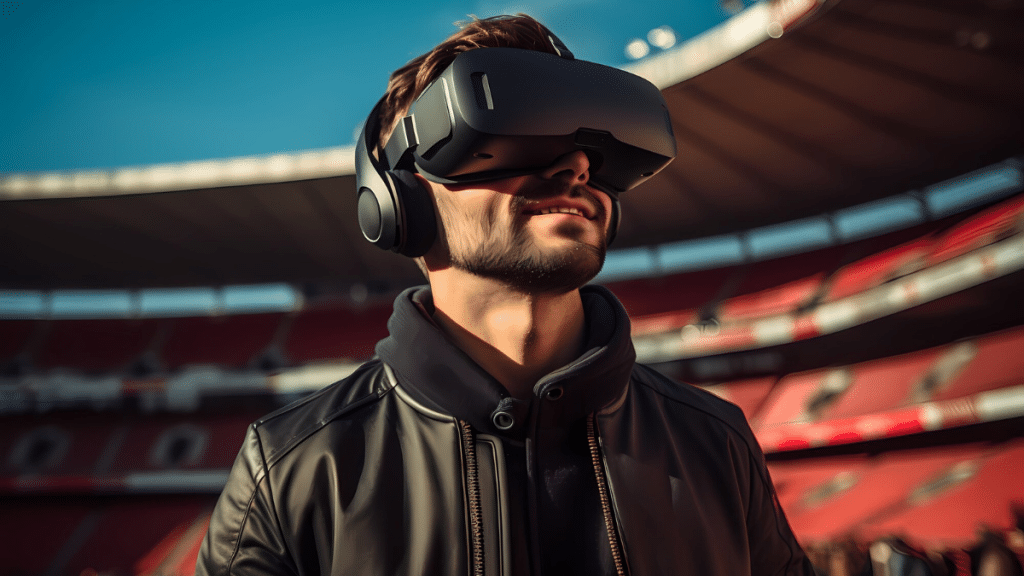Few moments in football are more intense than a penalty kick. One player, one ball, one goalkeeper—and the pressure of an entire stadium. While technique and practice have always been key, a new technology is entering the arena: virtual reality (VR). This immersive tool is changing the way players train for high-pressure penalties, blending neuroscience, repetition, and realism into a powerful new method of development.
In an era where every detail counts, VR allows footballers to replicate game-like scenarios with astonishing accuracy. It doesn’t replace physical training—it enhances it by adding psychological depth and technical feedback that were previously impossible to measure.
The Science Behind VR Training
When athletes put on a VR headset, they’re no longer in the gym or on the pitch. They’re standing in front of a roaring crowd, on the edge of the box, facing a keeper who’s ready to dive. VR simulations recreate this experience using 360-degree video or computer-generated environments, offering a lifelike view of real-game moments.
Besides the graphics, VR touches on one’s decision-making skills with near real-life simulations. The brain takes such simulations quite literally, treating them as genuine experiences. Such repetitions allow players to zen out, lock their gaze, and refine their motor skills.
The MelBet app is a good example of how mobile technology is intertwined with sports venues. While fans track statistics and watch games on the move, athletes are smarter to train with the help of mobile-integrated VR, further enabling training on-the-go.
Technique, Consistency, and Mental Rehearsal
From a player’s perspective, penalty kicks are not just about their strength or angle – there’s much more to it. Consistency is king. For instance, a virtual reality system can allow players to assess their body movements in third-person so that they can identify and correct any flaws.
Sports psychologists acknowledge the concept of “mental rehearsal”, and VR technology only serves to improve it further. Athletes who visualize a specific goal tend to achieve it, and VR takes this even further by allowing them to not merely think of the scene but be placed in it, sharpening the focus on precise moments of tension during a match.
Clubs like FC Midtjylland and PSV Eindhoven already use VR for shooting simulations. Players train their minds and bodies together by cycling through different goalkeeper reactions, crowd noises, and match scenarios—something regular drills can’t replicate.
What VR Systems Track in Penalty Practice
Here’s a closer look at the metrics that VR systems analyze during a penalty kick simulation:
| Metric Tracked | Purpose and Insight | Application in Training |
| Eye Movement | Tracks gaze fixation and ball focus | Improves visual discipline under pressure |
| Reaction Time | Measures decision speed and hesitation | Enhances confidence and composure |
| Body Posture | Assesses approach angle and balance | Refines shooting mechanics |
| Shot Placement Consistency | Evaluates ball direction and accuracy over repetitions | Promotes repeatable technique |
| Cognitive Load | Gauges stress and mental fatigue levels | Builds resilience for high-pressure moments |
These data points are used not just for individual feedback but also for team performance reviews. Coaches adjust drills based on VR analytics, bridging the gap between simulation and real-game execution.
The Psychological Edge
Like every kick of the penalty kick, pressure is always an unseen opponent. Some of football’s legends have missed pivotal penalties—not because they technically miscalculated, but due to the mental side. Virtual Reality aids athletes to practice pressure over and over, conditioning the mind to stay calm in determine-the-game scenarios.
For younger athletes, this is especially important, as they may not yet have felt the pressure of a final or a do-or-die match. With the help of virtual simulation, they experience that form of pressure during early stages of their careers, allowing them to fortify their mental arsenal.
Players and fans often share behind-the-scenes training content through digital platforms like Instagram MelBet, where cutting-edge methods like VR training are becoming increasingly visible in football culture.
Just One List: Benefits of VR in Penalty Kick Training
Let’s take a look at how virtual reality makes penalty training more effective:
- Builds muscle memory: Repeated virtual reps help automate ideal technique.
- Reduces performance anxiety: Regular exposure to pressure improves mental control.
- Identifies micro-errors: Motion tracking highlights small flaws in approach or form.
- Improves decision-making: Simulations train players to commit quickly and smartly.
- Offers safe repetition: Athletes can practice hundreds of kicks without fatigue or risk.
From Training Grounds to Matchday Performance
Moving VR technology past penalties, clubs are now using it for more advanced uses such as goalkeeper training, tactical analysis, and even for teaching referees. However, in the realm of sports psychology, penalties still play an important role—because they force ‘solo’ situations that magnify a player’s mental grit.
We can anticipate the future advancements of VR to be adaptive AI goalkeepers who adjust to the player’s habits, or replicas of full-body haptic suits that simulate the feeling of contact and kicking. These improvements will enhance the value and immersiveness of the simulation.
One thing is clear, virtual reality is unavoidable. It cannot be regarded as a passing trend. From the training pitch, locker rooms, and mental preparations, it’s clear VR is here to stay.
